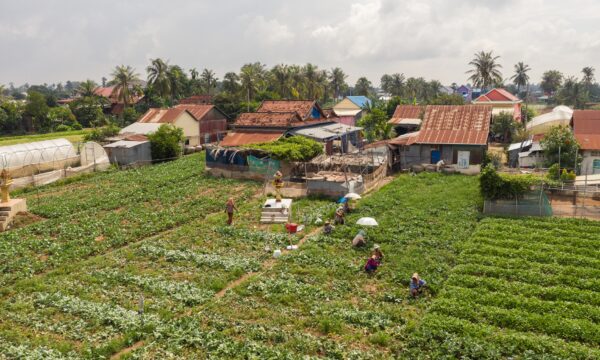A possible link between wheat stripe rust and climate change was observed by researchers meeting at the International Wheat Stripe Rust Symposium, which convened in Aleppo, Syria last week.
|
The symposium organised by the International Center for Agricultural Research in the Dry Areas (ICARDA) aimed to review the current global status of wheat stripe rust epidemics that have severely affected crop yields in Central and West Asia, the Middle East and North and East Africa in recent years. More than 100 scientists and policymakers from 31 countries participated and an important feature of the meeting was to share experience and approaches to manage wheat rust through breeding and control strategies in affected countries in Asia and Africa. Recently, severe epidemics of stripe (yellow) rust have been reported in Morocco, Ethiopia, Uzbekistan, Tajikistan, Kyrgyzstan, Turkey, Azerbaijan, Afghanistan, Iran, Pakistan, India, and Syria. “Some of the countries affected by rust epidemics have invested very little in agricultural research and development,” said Hans Braun, director of the Global Wheat Program at the International Maize and Wheat Improvement Center (CIMMYT) in Mexico. At the meeting, he challenged policymakers to recognize the link between scientific research and food security and to invest more heavily in agricultural research. “To combat the problem of wheat rusts, farmers in these regions need to adopt new varieties of wheat that have durable resistance to both stem and stripe rust,” said Ronnie Coffman, vice chair of the Borlaug Global Rust Initiative. Climate change, in terms of rising temperatures, and the timing and increasing variability of rainfall, is contributing to the spread and severity of rust diseases, said the press release. Emerging races of rust are showing adaptations to extreme temperatures not seen before. Scientists around the globe are working on monitoring and surveillance of stem rust and stripe rust to insure rapid detection and reporting so farmers, policymakers, and agricultural research centres can respond more quickly to initial outbreaks. Wheat rust has been a problem for many decades, as reported in various papers in the CAB Abstracts database (Newton, 1922; Tehon, 1927; Zekl, 1934; Naoumova, 1935; Beilin, 1938; and Roche et al., 2008). Interestingly, the paper by Beilin, published in 1938 in the Bull. Acad. Sci. in 1938 and abstracted in CAB Abstract in 1939, discussed the problems related with developing hardy wheat cultivars with resistance to drought, without paying attention to their response to diseases; and how the climatic conditions exacerbated the disease spreading. Beilin reported that Russian breeding work at the time had been concerned mainly with the development of hardy, prolific and drought-resistant wheat varieties with no focusing on their response to smut and rusts. As a result, the most popular standard wheat varieties then were highly susceptible to various rusts, including Puccinia, graminis, and the climatic conditions of the main area under winter wheat permitted overwintering of the rusts. The relatively high day temperature in June and abundant rainfall and dew in May and June facilitated their rapid development. The use of susceptible varieties under these conditions and the absence of correct crop rotations led to severe rust epidemics, lowering the quality of the grain and reducing the yields in some years and districts to about half the normal. The ICARDA press release also reported that new rust resistant varieties are in the pipeline at international and national agricultural research centres. Breeders are selecting for other important characteristics including improved yield performance, drought tolerance, and regional suitability. Country preparedness for outbreaks of wheat rust involves such issues as the availability of resistant varieties that are known to and accepted by farmers, the availability of sufficient quality seeds of new varieties for farmers to use, and the availability, accessibility and affordability of effective fungicides and capacity of farmers to use them. In most cases, the bottleneck to getting resistant varieties into the field in time to protect local harvests is local capacity and the ability of national programs to rapidly multiply seeds and deliver them to market. Improving country capacity requires long-term planning, funding, and getting farmers involved earlier in the variety selection process, says the ICARDA press release. Link to the symposium website Link to press release Further Reading
|
Related News & Blogs
Empowering women farmers in Pakistan with pest control knowledge
Women farmers in Pakistan play a central role in the country’s economy. However, many struggle to access essential information about sustainable farming approaches. Women make up nearly 66% of the agricultural workforce in Pakistan. Yet they receive ve…
30 May 2025




